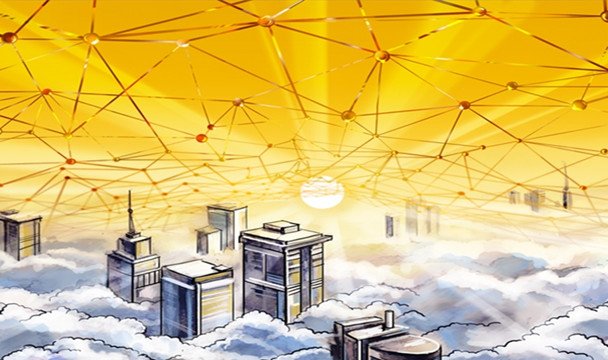The innovation of cloud computing has created a nearly trillion-dollar ecosystem. But this is only the first step. The blockchain will be the next iteration of computer logic.

Cloud computing is the first centralised turn. The company needs to store files and applications with access processing capabilities, as well as sufficient network bandwidth to ensure usage. However, the server room needs to be maintained, and it needs to be kept secure, as well as proper configuration and regular updates. By moving the server out of the cloud (or into the cloud), the company can extend its business beyond the confines of the hardware.
Today, companies can split their offices almost anywhere, and can even easily hire people to work remotely. Computers and smartphones serve as Bridges that focus and connect processing power elsewhere.
Now the blockchain is introducing a second iteration of the computing structure. Through distributed ledger system, block chain creates a secure, unchanging and democratic computing network. Unbreakable programs and web services, transparent networks and stronger system reliability can result.
The blockchain USES miners to solve mathematical problems and provide consensus. Miners use the power in the blockchain network in exchange for encrypted currency rewards. In general, they built the network and verified the creation of additional "blocks". The miners formed a network node system to store and process data. Miners have pools around the world to distribute their processing power.
The most popular etheric workshop allows developers to access the blockchain through the etheric square virtual machine (EVM). EVM provides developers with tools to build decentralized applications (or dapps). These applications use the block chain to host their back-end processes.
Dapp is broken up into pieces and running at the same time, unlike applications running on a single server. A few computers run a fragmented part of a program, and there is a lot of data redundancy. These programs form a command - based ledger that continuously validates the code. No computer has a whole application backend, so it's almost impossible to hack or destroy.
Unlike cloud computing, decentralised blockchains do not need to be in the server room. Cloud applications typically carry redundancy on a few nodes, but there are no similarities to the thousands of nodes that work on networks like Ethernet.
Cloud computing transfers servers to businesses, concentrating their processing capabilities elsewhere. The blockchain, however, is decentralized and decentralized around the world.
In fact, cryptocurrency can be used as a smarter, safer barter system to enhance the delivery of Internet technology and applications.
We can use a chain block to create independent network, Internet/cloud computing 2.0, increase the security of the network, and through the block chain committed to the computer, artificial intelligence, the progress of the Internet of things and record keeping.
This is a trillion-dollar solution, and we're just touching the surface right now.